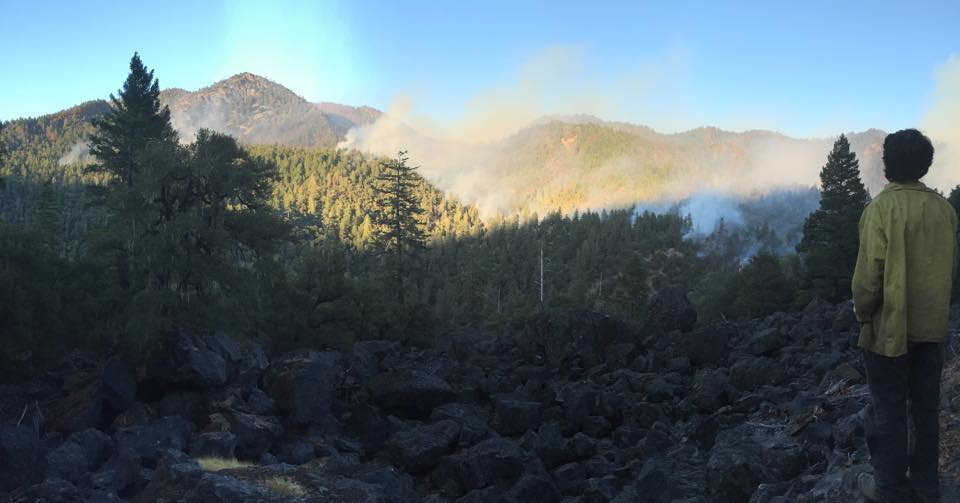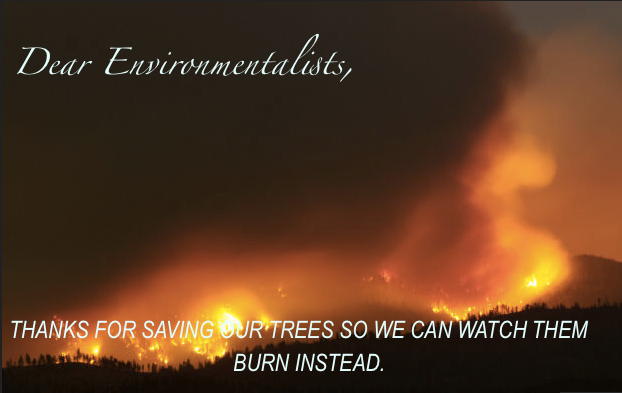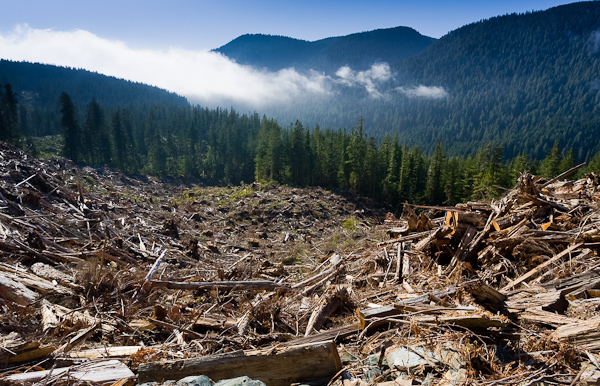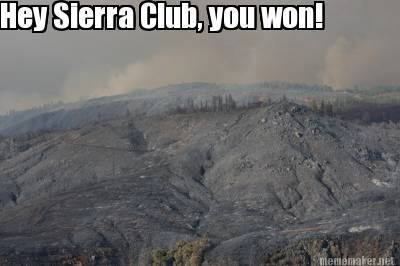 25 days ago, a lightning storm sparked countless wildfires in northern California. From my deck, I could see at least eight fires. These fires have all grown together, and now we have mega fires ravaging our forests. My life has been consumed by fire, not literally of course, but it is hard to focus on anything else. I am constantly monitoring the fires near my home, speaking with neighbors, attending community meetings, and giving out our wifi password to firefighters so they can check in with their families. I am grateful for the resources and boots on the ground doing all they can to save our forests and homes.
25 days ago, a lightning storm sparked countless wildfires in northern California. From my deck, I could see at least eight fires. These fires have all grown together, and now we have mega fires ravaging our forests. My life has been consumed by fire, not literally of course, but it is hard to focus on anything else. I am constantly monitoring the fires near my home, speaking with neighbors, attending community meetings, and giving out our wifi password to firefighters so they can check in with their families. I am grateful for the resources and boots on the ground doing all they can to save our forests and homes.
In the past week, I have come across several Facebook friends posting fault for the size and immensity of these wildfires on environmentalists.

I don’t have the heart to engage these friends one-on-one in a conversation about this misguided blame. Our communities have been under so much stress. It’s not a time for divisiveness; but I don’t think they understand the true causes of our current situation.
Logging and fire suppression are historically connected.
The United States Forest Service was formed in 1905 by President Theodore Roosevelt ((http://www.fs.fed.us/learn/our-history)). Just five years later, the West experienced the Big Burn, in which three million acres burned quickly and out of control.((http://www.fs.usda.gov/detail/r1/learning/history-culture/?cid=stelprdb5350042))

This historic wildfire left a legacy of fire suppression in our national forests largely to protect timber for private logging companies. The Kyle Dickman in the Washington Post explains:
But the boots-on-the-ground work of stopping fires has changed little since 1910, when America started its grand experiment to remove wildfires from forests. That year, a blaze called the Big Burn scorched 3 million acres of prime timber across Idaho’s panhandle and into Montana, infuriating the U.S. Forest Service, whose income relied on leasing public lands to timber barons who wanted only green trees. In the wake of the Big Burn, the agency dedicated itself to dousing every spark in the forest. It cobbled together troops of young men and handed out shovels, axes and orders to clear flammable material around the perimeter of wildfires. Without fuel to burn, the fires stopped.((http://www.nhregister.com/opinion/20150822/another-view-4-myths-about-wildfires))
In the wake of this fire suppression, our forests have become more dense. In some instances where 150 acres grew naturally in one acre, there are now 1200 trees. ((http://www.nhregister.com/opinion/20150822/another-view-4-myths-about-wildfires))
The reason our forest burn hotter and with more devastating consequences is because of the mismanagement of our public lands. This began with fire suppression and logging.
It is true that logging is pretty much non-existent on the public lands in my neighborhood. Sometimes salvage sales occur after fire, but the market is flooded. Salvage sales currently would cost more to conduct than would be earned, thus the USFS will can expect dead snags ti remain when these fires are out that will make it more dangerous the next time fire comes around.
When logging was in its heyday, not only were our rivers affected by the excess sediment in the rivers, but the monoculture plantations that we now have in our forests are dense and not resilient to fire. Rarely does the USFS revisit these plantations to reduce fuel loads. If they do, it is to use toxic herbicides to remove competing species and leaving a wake of miscarriages, deformed babies, and neurological disorders. ((http://www.washingtonpost.com/archive/politics/1979/06/22/herbicide-birth-defects-linked-for-house-panel/5120b2c2-c5dd-4f2a-9c27-de563f8a1cd6/))
When wildfire naturally hits a mature forest, it is largely beneficial. The undergrowth is removed and the mature trees remain. These sorts of fire are much easier to manage, as they are low and slow burning, and communities are better protected. Unfortunately, most of our forest communities are no longer surrounded by mature forests due to logging.

What does a forest look like after logging? Clearcuts leave behind large piles of slash and plantations of monoculture. Selective logging is better, but it is focused on merchantable timber and will not decrease the density of our forests other than removing the more mature trees, trees that can withstand fire. Loggers do not remove the brushy fuels that are first to ignite and spread during wildfire. They are harvest merchantable timber. They don’t want the manzanita, ceanothus, madrones, or oaks.
Yes, we need lumber. Logging is necessary, but to blame the current scope and tragedy of the western wildfires on environmentalists is misleading. Mismanaged forests is the real cause. Environmentalists are in favor of healthy forests.
In the LA Times, Kyle Dickman explains:
We created our fire problem, and virtually everything we’re doing to combat it only makes it worse.
Most Western forests grew up alongside frequent low-intensity fires that burned saplings and brush in the understory and left behind the oldest and largest trees — those capable of surviving the heat. But for the last 100 years we’ve dealt with blazes by putting them out. Extinguishing fires that once thinned out the vegetation in flame-adapted landscapes has left forests incredibly dense. At some places in the Sierra foothills, there are a thousand trees per acre where just 150 was the historic norm. The extra fuel has created monstrous blazes, such as the 2013 Rim fire that burned 250,000 acres around Yosemite National Park, or the Yarnell Hill fire that same year, which killed 19 firefighters and burned nearly 130 homes in Arizona…
The solution is to stop extinguishing every glowing spark, and to start treating wildfires like floods: predictable and sometimes uncontrollable events that homeowners and towns can plan around. Thinning forests outside communities, lighting more prescribed burns to eliminate the most volatile grasses and brush, and being more selective about which fires we fight would help restore forests, protect towns and mitigate the destruction of future fires. So would teaching the public that Smokey Bear has been misleading us all these years with his empowering slogan: “Only YOU Can Prevent Forest Fires.” The bare-chested bear, the most successful advertising icon since Santa Claus, should take to evangelizing the message that foresters and city planners coined after decades of losing the fight in Southern California: Learn to live with fire…
Congress can help by passing a bill soon to be proposed by Sen. Maria Cantwell (D-Wash.). The bill, based on “The Wildfire Management Act of 2015: A White Paper,” which Cantwell released in July, will offer the sort of nuanced approach that the West needs to resolve the wildfire crisis. Included in the bill will be nearly $1 billion for hazardous fuels reduction around communities, $300 million for prescribed fires and money to encourage towns and homeowners to prepare for wildfires rather than react to them.((http://www.latimes.com/opinion/op-ed/la-oe-0809-dickman-fire-season-20150809-story.html))
Lightning caused wildfire is natural. It is part of the ecosystem. We need to prepare our forests for the inevitable. Masticating, hand removal of fuels, and controlled burning in the winter months will create a healthy ecosystem more resilient to fire. Spending millions on forest management will lessen the billions spent on fire management. As Dickman, author of On the Burning Edge, concludes:
Americans must learn to live with fires. It will take preparing homes and communities for the worst blazes, letting flames do the good work of thinning trees and intentionally igniting more fires when the time is appropriate. It took a century to remove fire from the landscape. It’ll take at least that long to teach people that the flames are not just something to fear.((http://www.nhregister.com/opinion/20150822/another-view-4-myths-about-wildfires))
Don’t get me wrong…when fire starts near our mountain home, I am thankful for fire suppression efforts. We take fire preparedness seriously maintaining defensible space, putting in our own dozer lines, and supporting firefighters however possible. We need to make the larger forest ready, not just our homes. Thank you fire fighters!

First, the people writing this article are the eco people and should be put out to pasture.
Second, the US Forest REQUIRED clear cutting,,and they are dead WRONG.
Third, I don’t see the forest after years of SELECT CUTTING and what the forest should look like.
Fourth, My family was logging in Calaveras County from 1938 until the eco shut the mill down in 1963. We had some 80,000 acres to log and never run out of trees.
FIFTH, clear gutting was enforced to ruin the forests and show the public the waste left behind to support their agenda.